The Difference Between The Sazerac And Old Fashioned Cocktails Is All In The Whiskey
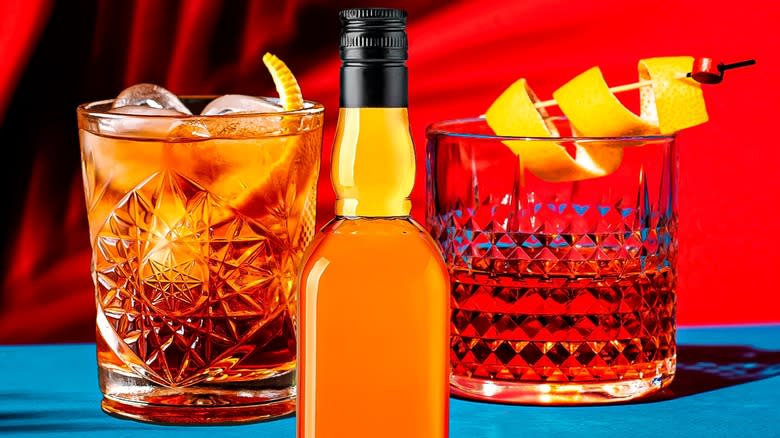
The old fashioned and the sazerac are two of the most quintessential cocktails in the bartending world (if not the two). In fact, in the historical mixology timeline, the old fashioned and the sazerac are considered close cousins, and despite the "old" name, it's unclear which drink was actually invented first. A recipe for a "whisky cocktail" resembling an old fashioned was published in legendary bartender Jerry Thomas's seminal 1862 guide "How to Mix Drinks, or the Bon-Vivant's Companion," and another recipe by the name "old fashioned cocktail" appeared shortly afterward in Theodore Proulx's "The Bartender's Manual" in 1888. Near-simultaneously, the sazerac cocktail was trademarked by the Sazerac Company in 1900, but there are records of fans enjoying it since as early as 1838.
Whichever came first, both classic cocktails are all about the balance of whiskey, sugar, and bitters, a timeless interplay. The drinks are both also served in a chilled rocks glass. But, the primary difference lies in the base spirit, bourbon vs. rye. The old fashioned uses bourbon, while sazeracs use rye -- and to name this as the only defining separation would be reductive at best (blasphemous at worst). Let's get into it.
Read more: The 27 Best Bourbon Brands, Ranked
What Is A Sazerac?
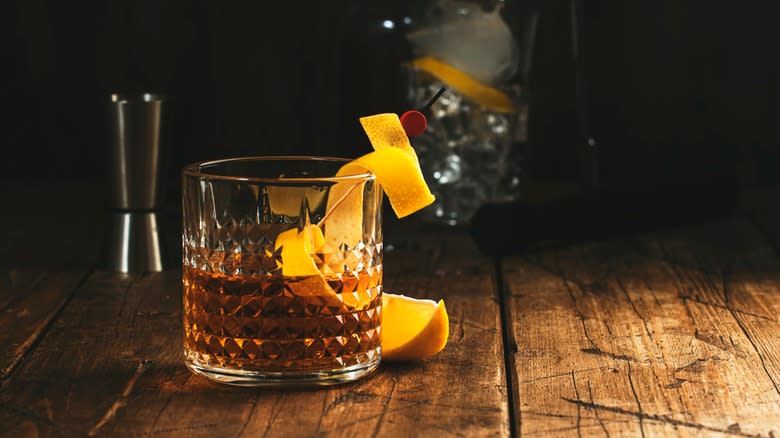
Sazeracs combine rye whiskey, absinthe, sugar, and Peychaud's bitters. Brandy is also a common base variant, but traditionally, when you order a sazerac, you can expect to receive a rye drink. The brandy streak likely stems from the first wave of the French Quarter bevy, which used the French brandy "Sazerac de Forge et Fils Cognac" instead of rye.
To make a sazerac, start with a sugar cube, water, and bitters are muddled in the bottom of a mixing glass. Many modern bartenders expedite this step by using simple syrup instead. Then, the rye whiskey is added directly on top, stirred with ice, strained into a chilled, absinthe-washed rocks glass, and garnished with a lemon twist. The absinthe provides an anise spice, the rye brings depth, and the Peychaud's keeps it mature yet lively. Peychaud's remains the second-most-popular bitters stocked in bars nationwide after Angostura. If you've never tried it before, the ingredient's flavor is all bitterness and spice, featuring top notes of candied cherry, orange, and clove. By comparison, Peychaud's bitters is lighter and slightly sweeter than deeper, savory Angostura, and also lends a bright red hue to sazeracs (whereas Angostura bitters impart a muted caramel color).
What Is An Old Fashioned?
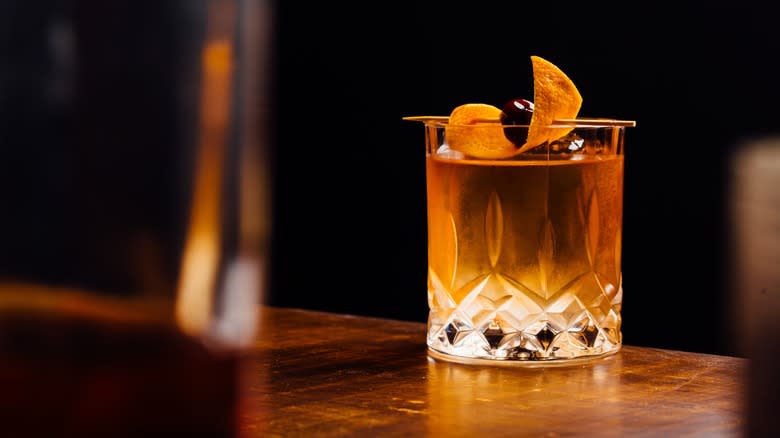
The old fashioned cocktail is an unpretentious three-parter: Bourbon, bitters (typically Angostura), and simple syrup, all garnished with an orange twist or Luxardo cherry. Befitting the "old fashioned" name, the proto-cocktail has inspired a boozy kaleidoscope of spinoffs from the cherry-flavored Fancy-Free to the Oaxaca Old Fashioned, which is made with mezcal instead of bourbon. Mark Twain was a famous fan of one variation involving Scotch and lemon.
For such a sophisticated cocktail, an old fashioned requires an incredibly straightforward assembly. All the ingredients are combined, stirred with ice, and strained into a rocks glass. That's it. Bartenders either chill the glass or pour the finished cocktail over a single large ice cube or sphere to serve. The big ice cube can serve a pretty important function in an old fashioned, along with just being fun. Due to the minimal lineup of ingredients, balance and dilution are crucial here. The sugar softens the bourbon, and the bitters prevent the sugar from making the profile too sweet. This harmonious blend is a great opportunity to showcase the smoothest, highest-quality bourbon in your home bar's liquor cabinet.
Old Fashioneds Use Bourbon, While Sazeracs Use Rye
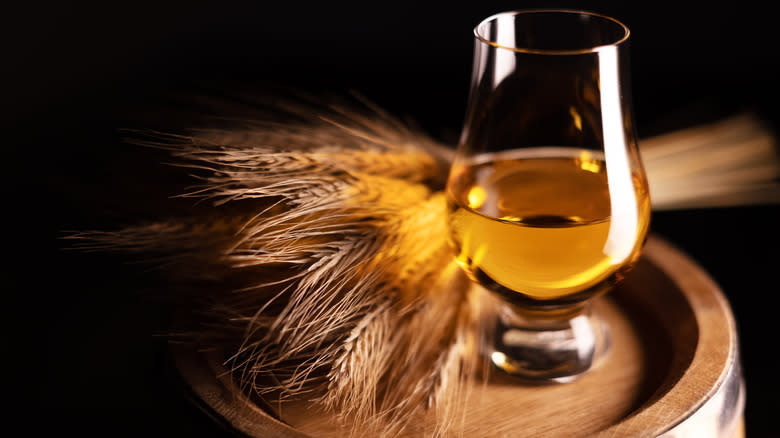
The main distinguishing difference between an old fashioned and a sazerac is that the former uses bourbon, while the latter has a base spirit of rye whiskey. It might not seem like a huge deal — they're both types of whiskey, right? — but this one nuanced ingredient makes a world of difference in the flavor profile of these cocktails. Bourbon creates a sweeter, richer taste, while rye lends a more peppery note.
This is particularly identifiable with sazeracs, which reside on the flavor intersection of the peppery rye and anise-forward absinthe. The absinthe lends spiced licoricey depth, and the rye keeps it dry and dimensional without being sweet, rounded out by the Peychaud's bitters on the back end. Notably, some bartenders use a combination of both bourbon and rye in their old fashioned recipes. It isn't uncommon practice, bourbon is traditional.
Also notably, even with the sazerac's addition of absinthe, the old fashioned is a much stronger cocktail. Punchy, spirit-forward sazeracs stand at a 19.05% ABV, or 31.8 proof, while an old fashioned clocks in at a formidable 32.87% ABV, or 65.74 proof. For reference, bourbon straight from the bottle is 40% ABV. A bar spoon's worth of absinthe is all it takes to rinse each sazerac glass. If you don't want to toss that scrumptious diluted absinthe down the drain, you could pour it off into a shot glass for a spiced sidecar -- which would also raise the overall ABV of your sipping experience.
Sazeracs Are Historically A New Orleans Thing
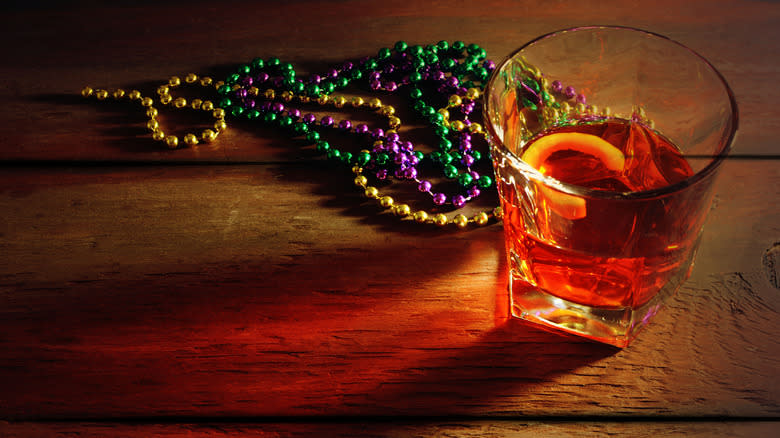
It would feel inappropriate to discuss the sazerac at this length without mentioning its regional significance — a defining attribute that few if any other cocktails share to the same degree. In 2008, the sazerac was crowned with the illustrious title of the Official Cocktail of New Orleans. Long before that, aside from the rye, another key sazerac ingredient was inspired by a historical figure from the Big Easy. Peychaud bitters are named after the Creole pharmacist Antoine Amédée Peychaud, who immigrated from the French colony Saint Domingue (modern-day Haiti) to New Orleans during the Haitian Revolution. He arrived just in time to make his mark on the city's cocktail culture forever, inventing his eponymous bitters at his apothecary shop at 437 Royal Street in 1838.
Nowadays, contemporary sazerac fans celebrate the cocktail with a week-long sazerac fest held at The Sazerac House, a historic building on the corner of Canal and Magazine. In a recent exclusive interview with Tasting Table, Nina Compton, chef and owner of two award-winning New Orleans restaurants, shared that the sazerac is her favorite cocktail for pairing with jambalaya. To local fans, sazeracs are all about hometown flair, and each sazerac carries a taste of New Orleans to fans drinking 'em elsewhere in the world.
Old Fashioneds Were Originally A New York Institution ... Probably
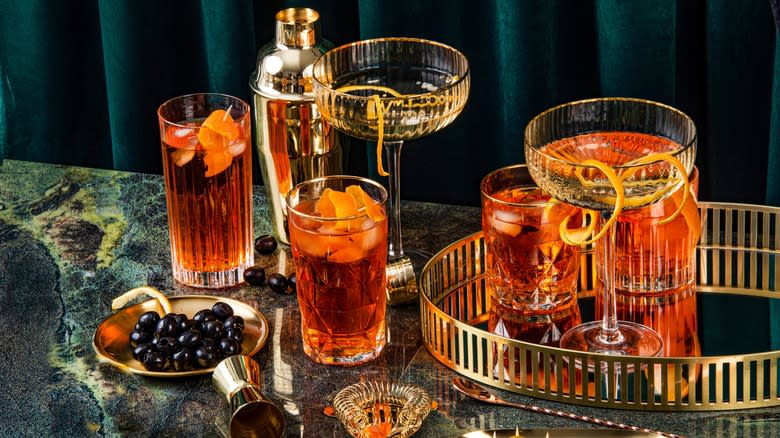
Compared to the sazerac, the old fashioned is decidedly lacking in regional ties. Although, if the cocktail were to have a hometown, it would be New York City. Per the lore, the cocktail got its name by being the first ever drink called a "cocktail" recorded in print. In 1806, a newspaper based in Hudson, New York called "The Balance and Columbian Repository" published a piece in which it defined a "cocktail" as a "mixture of spirit, water, bitters, and sugar," via Advanced Mixology -- which reads exactly like a recipe for an old fashioned.
By some accounts, the official creation of the old fashioned is credited to a master mixologist called James E. Pepper, who moved from Louisville, Kentucky to NYC during the 1880s and brought the drink with him to the iconic Waldorf-Astoria Hotel Bar. The bar's elite metropolitan patrons quickly developed a taste for the old fashioned, and folks have been digging it ever since. However, this version of the origin story has been disputed. The drink might have enjoyed an unofficial fan base before that in the late 1700s, as sipping whiskey with a few drops of bitters became a fashionable trend -- and what better city to lead the ever-shifting tides of what's fashionable than New York?
Read the original article on Tasting Table

